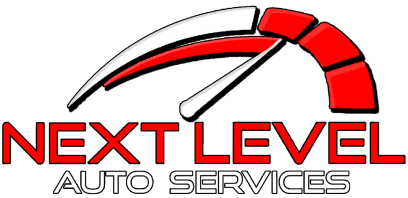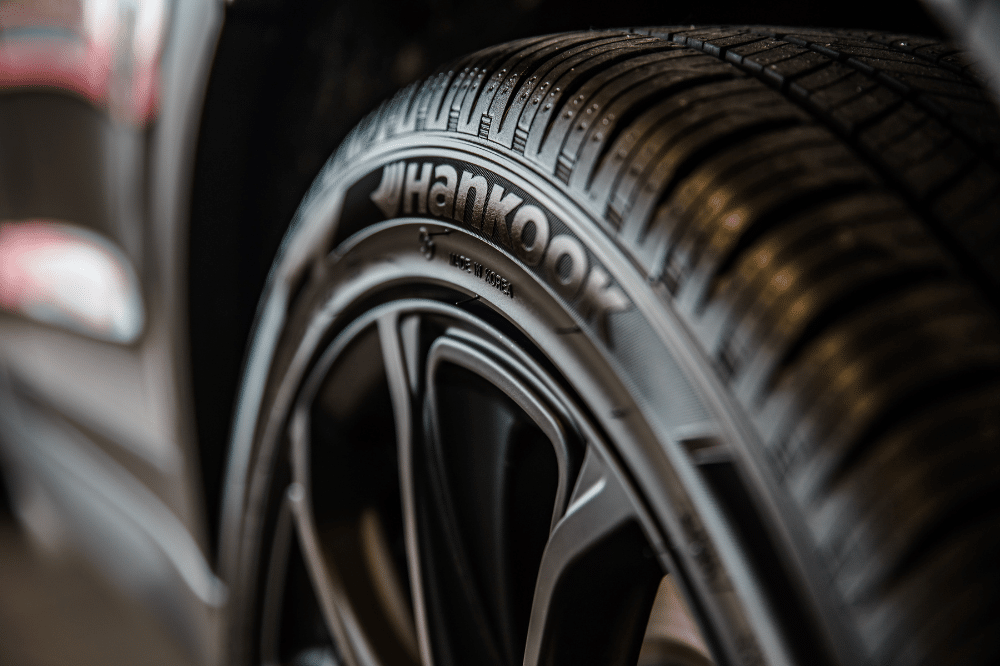As temperatures rise and road trips become a summer staple, your vehicle’s tires may be more vulnerable than you realize.
After months of enduring cold weather, potholes, salt-covered roads, and fluctuating air pressures, your tires could be underinflated, unevenly worn, or even structurally compromised. These seemingly minor issues can have major consequences affecting your vehicle’s handling, fuel efficiency, and most importantly, your safety. We often see the aftermath of neglected tire care, and we’re here to help you stay ahead of those problems before they disrupt your summer plans.
So, how do you know if your tires are truly ready for summer? This blog explores exactly that, offering a practical guide to summer tire maintenance, including how to spot signs of wear, the importance of tire pressure checks, the benefits of regular rotation and alignment, and actionable tips to ensure your tires are road-trip ready. Whether you’re gearing up for a weekend getaway or just making the daily drive through Mequon, North Milwaukee, or Menomonee Falls, the team at Next Level Auto Services wants to make sure your vehicle is safe, efficient, and ready to handle the heat.
Why Tire Maintenance Is More Important Than You Think
Most drivers understand the value of regular oil changes or brake inspections, but tires often get overlooked, especially when they appear “fine.” However, tires are your only contact with the road. They determine how well your vehicle handles, stops, and corners.
Poorly maintained tires don’t just wear out faster. They reduce fuel efficiency, compromise handling, and most importantly, pose serious safety risks during high-speed summer travel. With higher road temperatures and longer drives, the margin for tire failure narrows. That’s why tire maintenance should be a priority this time of year.
What Happens to Tires After a Long Winter?
Winter driving conditions can quietly damage your tires. Here’s how the cold season impacts them:
- Underinflation from cold temperatures: Tire pressure drops in the cold, about 1 PSI for every 10°F decrease, leading to underinflated tires that wear faster and reduce fuel efficiency.
- Rubber drying from salt and grime: Road salt and de-icing chemicals dry out tire rubber, increasing the risk of cracking and sidewall damage.
- Structural stress from potholes and ice: Icy roads and potholes can knock your wheels out of alignment or cause internal tire damage that isn’t immediately visible.
- Uneven tread wear by spring: Without regular maintenance, tires may show signs of irregular wear, reduced grip, or compromised safety by the time warmer weather arrives.
- Increased summer driving risk: Tires weakened by winter are more prone to blowouts and braking issues when exposed to summer heat and higher speeds.
Inspecting and servicing your tires after winter helps prevent these issues and prepares your vehicle for safe summer driving.
Key Benefits of Summer Tire Maintenance
Staying on top of tire maintenance is one of the simplest ways to boost your vehicle’s performance, safety, and efficiency, especially during the summer. With rising temperatures and longer drives, your tires face more stress, making regular care more important than ever.
- Better Fuel Economy – Proper inflation reduces rolling resistance, helping your vehicle use less fuel and operate more efficiently.
- Improved Handling and Braking – Even tread and correct pressure give your tires the grip they need for sharp turns, sudden stops, and wet conditions.
- Longer Tire Life – Regular rotations and alignments prevent uneven wear, helping your tires last longer and perform more consistently.
- Increased Safety – Well-maintained tires lower your risk of blowouts, hydroplaning, and loss of traction during hot weather or summer storms.
A few simple checks and services now can save you money and help prevent unexpected issues when the roads and your schedule heat up.
5 Signs Your Tires Might Not Be Summer-Ready
Before you pack your bags for a weekend getaway, take a few minutes to inspect your tires. Look for these warning signs:
1. Tread Wear Indicators Are Visible
Modern tires include built-in wear bars. If the tread has worn down to the level of these indicators, it’s time for a replacement.
2. Cracking or Dry Rot
Hot weather exacerbates rubber cracking. If you spot fine lines along the sidewalls or between the tread blocks, your tires may be too dry to perform safely.
3. Uneven Wear Patterns
Notice if one side of the tire is more worn than the other. This often points to poor alignment or a missed rotation.
4. Bulges or Blisters
Any protrusions on the tire’s sidewall may signal internal damage—a major red flag for safety.
5. Low Tire Pressure
A quick check with a tire gauge can tell you if your inflation is off. Underinflated tires heat up faster and wear more quickly during summer driving.
Concerned about what you’re seeing? Book a tire inspection at Next Level Auto Services today—we’ll make sure you’re road trip ready.
How to Check Tire Pressure: A Quick Guide
Checking your tire pressure is one of the easiest maintenance steps you can take—and it can make a big difference in how your vehicle handles, how efficiently it uses fuel, and how long your tires last. It only takes a few minutes, and doing it regularly helps you catch minor issues before they become major problems.
- Buy a reliable tire pressure gauge – Whether you prefer a digital or dial-style gauge, make sure it’s accurate and easy to read. These inexpensive tools are far more dependable than relying on guesswork or visual checks.
- Check tire pressure when tires are cold – Tire pressure naturally increases as you drive and the tires heat up. For the most accurate reading, check your pressure before your first trip of the day or after the car has been sitting for several hours.
- Find the recommended pressure – Don’t go by what’s printed on the tire itself. Instead, look for the correct PSI (pounds per square inch) on a sticker inside the driver’s side door jamb. This number reflects what your specific vehicle needs for safe operation and even wear.
- Compare and adjust as needed – Use your gauge to get a reading on each tire, then add or release air to match the recommended pressure. Don’t forget the spare tire—if your car has one, it also needs to be properly inflated in case of emergencies.
- Pro Tip: Don’t rely solely on your TPMS (Tire Pressure Monitoring System). These systems typically only trigger warnings when tire pressure drops below a critical threshold. Slight under-inflation, which still affects handling and wear, often won’t set off an alert.
Making tire pressure checks a regular habit at least once a month and before long trips can significantly boost safety and performance, especially during the hot summer months when tire pressure tends to fluctuate more frequently.
How Often Should You Schedule Tire Rotations?
To extend tire life and avoid uneven tread, rotations should be performed every 5,000 to 7,500 miles. Regular rotation balances wear patterns across all four tires, especially if your vehicle is front- or rear-wheel drive.
At Next Level Auto Services, we include tire rotation recommendations in your digital vehicle inspection. Our ASE-certified technicians also evaluate tread depth and check for any signs of misalignment, helping you stay ahead of costly issues.
The Role of Alignments in Summer Driving
Summer road trips often involve long highway stretches, construction zones, and the occasional curb clip factors that can throw your alignment out of spec. Misalignment causes:
- Uneven tire wear
- Reduced steering control
- Increased fuel consumption
If your car drifts left or right, or your steering wheel feels off-center, it’s time to schedule an alignment. We use Hunter alignment equipment to ensure precision and performance.
If you’re noticing signs of misalignment, trust our team for precise wheel alignment in Milwaukee to restore safe handling and even tire wear.
Tire Maintenance Tips for Milwaukee’s Summer Roads
Driving in the heat can be brutal on rubber. Use these tips to extend the life of your tires and stay safe:
- Avoid Overloading: Too much weight puts extra stress on your tires.
- Watch for Potholes and Debris: Summer roadwork zones are notorious for hazards.
- Check Pressure Monthly: Heat causes air expansion, which can affect readings.
- Store a Tire Inflator: A small 12V compressor can be a lifesaver on road trips.
- Inspect Your Spare: Don’t forget to check your backup; it’s often neglected.
Why Choose Next Level Auto Services for Your Tire Needs?
We specialize in maintaining and servicing high-performance vehicles, including Tesla, BMW, Audi, Mercedes, Honda, and Acura. Our technicians use OEM diagnostic tools, perform Hunter alignments, and offer synthetic Amsoil and Mobil 1 oils to match your vehicle’s premium quality.
We provide:
- Transparent, photo-documented Digital Vehicle Inspections via Tekmetric
- Honest recommendations on what needs attention now vs. what can wait
- Same-day or next-day service availability
- A 3-year/36,000-mile warranty on all services
Whether you’re in Mequon, North Milwaukee, or Menomonee Falls, you’ll get personalized care, ASE Master Tech expertise, and a customer experience designed to put you in the driver’s seat literally and figuratively.
Frequently Asked Questions About Summer Tire Maintenance
How do I know if my tires are safe for summer driving?
Look for signs like uneven tread wear, visible cracks, low tire pressure, or bulges on the sidewall. If your tires are more than 5 years old or have worn tread indicators, it’s time to have them professionally inspected. A certified auto repair shop in Milwaukee like Next Level Auto Services can help you decide if a replacement or alignment is needed.
How often should I check my tire pressure in the summer?
Tire pressure should be checked at least once a month during the summer—especially before road trips. Heat causes air inside your tires to expand, which can lead to overinflation or uneven wear. Use a reliable tire pressure gauge and compare your readings to the PSI listed inside your driver’s door jamb.
Do I really need a tire rotation if my tires look fine?
Yes, even if your tires look okay, regular rotation every 5,000 to 7,500 miles prevents uneven wear and extends tire life. It also improves fuel efficiency and traction, especially during hot weather.
Schedule Your Summer Tire Service in Milwaukee, WI
Don’t let worn or underinflated tires ruin your summer plans. If you haven’t inspected your tires since winter, now is the perfect time to take action. Simple steps like checking your tire pressure, rotating your tires, or booking a professional alignment can dramatically improve your vehicle’s safety, fuel efficiency, and overall performance.
At Next Level Auto Services, we’re here to make that process easy and stress-free. Whether you’re due for a routine tire check or preparing for a summer road trip, our team is ready to help with expert service, same-day or next-day availability, and a welcoming environment.
Visit us at 9334 N 107th Street, Suite 100, Milwaukee, WI 53224
Call 414-206-0100 or schedule your appointment online today to make sure your tires and your summer are ready to roll.

